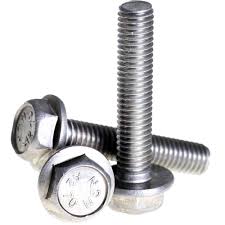
In the demanding environment of UAE construction, the correct installation of galvanized bolts is paramount for ensuring structural integrity, longevity, and safety. Galvanized bolts, coated with a protective layer of zinc, are essential hardware components widely used in construction due to their resistance to corrosion, a critical factor in the harsh climatic conditions of the UAE. For professionals in the hardware and export sectors, understanding best practices for installation not only enhances project outcomes but also supports the export of high-quality construction materials. This guide provides detailed, authoritative tips to help you master the installation process, avoid common pitfalls, and contribute to the durability of infrastructure projects across the region.
Also read – Experts Guide: Stud Bolts vs. Regular Bolts – What Hardware & Export Professionals Need to Know
Understanding Galvanized Bolts and Their Importance
Galvanized bolts are fasteners that have undergone a galvanization process, where a zinc coating is applied to protect the underlying steel from rust and corrosion. In the UAE, with its high humidity, saline air, and extreme temperatures, this protection is indispensable. These bolts are commonly used in structural applications, such as steel frameworks, bridges, and industrial facilities, where failure due to corrosion could lead to catastrophic consequences. For hardware suppliers and exporters, providing bolts that meet international standards, such as ASTM or ISO, ensures reliability and compliance with construction codes, making them a preferred choice for projects demanding longevity and minimal maintenance.
Pre-Installation Preparation
Proper preparation is the foundation of successful bolt installation. Begin by inspecting all galvanized bolts for any damage to the zinc coating, such as scratches or voids, which could compromise corrosion resistance. Use gloves to handle bolts to prevent oils and moisture from your skin from affecting the coating. Ensure that the mating surfaces are clean, dry, and free from debris, rust, or old paint. If necessary, use a wire brush or appropriate solvent recommended by manufacturers, avoiding abrasive methods that might damage the galvanization. For threaded parts, apply a zinc-rich lubricant or anti-seize compound compatible with galvanized coatings to prevent galling and ensure smooth tightening, especially in high-temperature environments common in the UAE.
Installation Techniques and Torque Specifications
During installation, use calibrated torque wrenches to achieve the specified torque values, which are critical for maintaining clamp load and joint integrity. Over-tightening can strip threads or crack the zinc coating, while under-tightening may lead to loosening under vibration. Refer to engineering drawings or standards like those from the ASTM International for torque recommendations based on bolt size and grade. In UAE’s variable temperatures, account for thermal expansion by consulting project specifications—sometimes, re-torquing after temperature stabilization is advised. Always tighten bolts in a star or cross pattern for uniform pressure distribution, particularly in flange connections, to avoid distortion and ensure a leak-proof seal.
Post-Installation Inspection and Maintenance
After installation, conduct a thorough inspection to verify that all bolts are correctly torqued and that the galvanized coating remains intact. Use ultrasonic or torque testing methods for critical applications. In corrosive UAE environments, implement a regular maintenance schedule to check for signs of white rust or corrosion, which can occur if the coating is compromised. Clean any accumulated dirt or salts with fresh water and mild detergents, avoiding harsh chemicals that might degrade the zinc. For long-term projects, consider supplementary protections like paint or sealants over galvanized surfaces, but ensure compatibility to prevent adverse reactions.
Common Mistakes to Avoid
Avoid mixing galvanized bolts with dissimilar metals, such as stainless steel or copper, to prevent galvanic corrosion, which accelerates in humid conditions. Do not use impact wrenches without torque control, as they can easily over-tighten and damage threads. Never install bolts in wet conditions without proper drying, as trapped moisture undermines corrosion resistance. Additionally, ensure that stored bolts are kept in dry, covered areas to prevent pre-installation corrosion, a common issue in UAE’s coastal regions.
For hardware shopkeepers and construction professionals in the UAE, partnering with a reliable supplier is crucial. An industrial equipment supplier provides essential materials like fasteners, tools, and safety gear, ensuring quality and compliance. Key criteria for choosing a supplier in Dubai include product authenticity, adherence to international standards, timely delivery, and after-sales support.
When it comes to sourcing high-quality galvanized bolts and other construction hardware, AHMAD AND KHADEEJA TRADING LLC stands out as a trusted partner. With decades of experience serving the UAE construction sector, they specialize in Fasteners, Safety Items, Rigging Ware, and Power Tools, offering products that meet rigorous standards for durability and performance.
Based in Deira, Near Sabkha Bus Stand, AHMAD AND KHADEEJA TRADING LLC has built a reputation for reliability and expertise. Their extensive inventory ensures that hardware professionals and exporters have access to top-tier galvanized bolts that withstand UAE’s challenging conditions, backed by knowledgeable support and efficient service.
Visit their website at aktc.co to explore their range and benefit from their industry experience. For immediate assistance, contact them directly.
